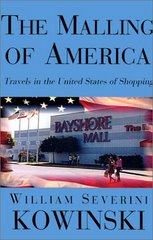By the time that geophysicist and seismologist Lori Dengler walked to the podium, the room was completely silent. Her task was to describe what the next Cascadia earthquake probably will be like, but "our point here is not to terrify you. In fact, I fully expect to survive the next Cascadia earthquake, although I would rather that it waits another hundred or two hundred years. There's absolutely no reason why we can't live with subduction zone earthquakes. We actually have our subduction zone to thank for our absolutely gorgeous scenery here."
The rugged landscape has not been smoothed by millennia of wind and rain, because it was formed relatively recently, in geological time, and it is still being formed by active plate movement. "The shape of the land here is a result of the fact that we are a techtonically youthful area."
She noted that stories of Native North Coast peoples recognize the benefits as well as the destruction caused by techtonic action. "They talk about the characters of Earthquake and Thunder who not only scared them, but also provided uplift or down-drop of the land," which added new places to fish and new sources of food.
Dengler then described the results of the 1995 earthquake planning scenario. Because it was financed by the state of California, she mentioned, the scenario modeled a magnitude 8.4 Cascadia subduction zone earthquake, which doesn't have the same impact on Oregon and Washington as a 9.0 quake would. "An 8.4 extends from Cape Mendicino up to the Oregon border. A magnitude 9 takes you all the way up to Vancouver Island... But in terms of the impacts locally, certainly the ground-shaking impacts, they are not likely to be significantly different."
She noted that for all the emphasis on the tsunami in Asia, "for most of us, it's the earthquake that we are going to need to be concerned with. Most of us don't live in a tsunami hazardous zone."
Larger magnitude earthquakes don't necessarily shake more strongly, she noted, but they shake longer. Five minutes of strong shaking is enough to topple poorly built structures, and significantly damage some better-built structures.
Dengler referred to a map of the North Coast that shows intensity zones: the higher the intensity, the more damage. Most of Eureka and much of Arcata are in intensity 8 areas, which is pretty intense, but "most well-built buildings should survive with maybe cosmetic damage."
Most of the North Coast is in the intensity 7 area, "which is enough to knock down chimneys and totally trash your kitchen." Probably the most severe effects will be in damage to bridges and roadways. "It will probably be impossible to get across the Mad River...For a couple of days we probably won't be able to drive safely between Arcata and McKinleyville."
A magnitude 9 earthquake will cause ground-shaking all the way up to Vancouver Island. Dengler plotted shaking effects based on the Alaska quake of 1992, which was 9.2. In her model of a Cascadia 9, the intensity 7 area extends all the way to San Francisco. "Items fall off the shelves in Santa Barbara, there's minor damage in Bakersfield, and Sacramento gets absolutely nailed. This earthquake is going to affect the entire state, as far as ground-shaking is concerned."
Origins: The Winter Solstice
-
The Winter Solstice is considered the most celebrated annual event in the
history of human cultures around the world. Ancient structures survive in
m...
3 days ago







No comments:
Post a Comment